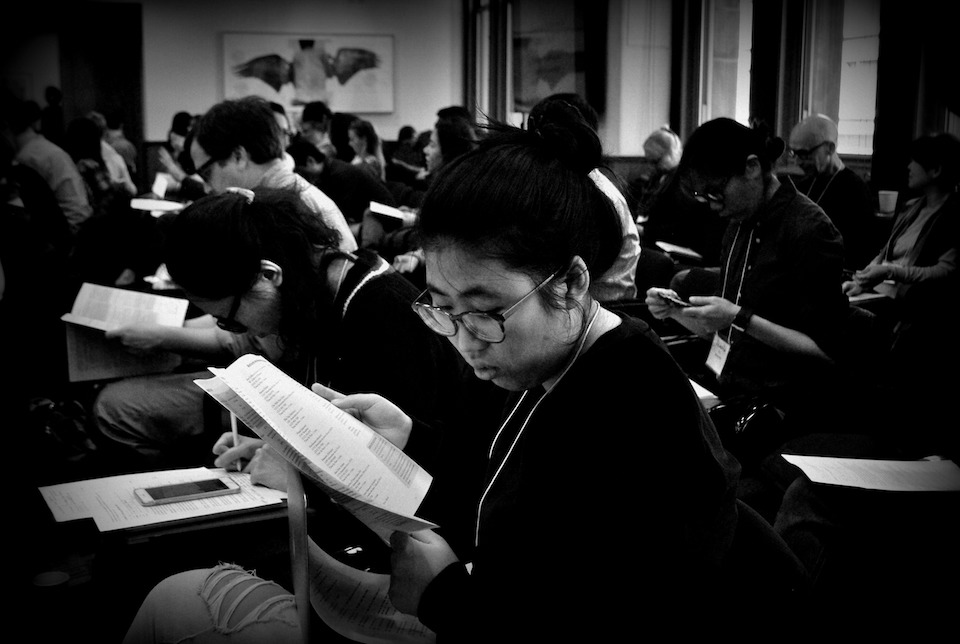Learning through Emilio
I took three photographs with Emilio on the final day of school. In the last, we tried to look tough, at least I did. I wasn’t very convincing with my turned-up collar and the stunned look in my eyes, whereas, Emilio—whom I always called Milio—didn’t even have to try. Hood on and shoulders hunched a bit, his eyes speak years of experience my own White privileged and sheltered existence can’t begin to fathom.
His arm is draped around my shoulder, his fingers splayed possessively, as if he is afraid to let go. It could be he does not know how to take formal pictures and compose his body properly, but I doubt that is the case. At 15, he is years older than my other 7th-grade students. The girls in class swoon over Milio just because of it. The boys want to hang with him, so that his knowledge and experience will rub o on them and make them cool by mere association.
It was true—he was more mature than the other students—but I could always catch little glimpses of a wide-eyed, little boy wonder in Milio. It made him endearing. I still remember the look on his face when I shared a story from my junior high years with our 1st-period class. A boy had asked me to dance at the 8th-grade spring formal, then laughed at me and told me to have fun (dancing with myself, that is).
Emilio had chuckled along with his classmates as I recounted my tale of teenage angst, but his reaction was different in that he processed the slight on my behalf. It was interesting to watch it register on his face as he seemed to resolve in just a few seconds that the 8th-grade boy from my past was an absolute idiot. And in that moment, I loved Milio. Certainly not in a romantic way, but for the unspoken gesture and understanding that he would like to go back in time, beat up the boy to protect my honor, and spare me any unnecessary embarrassment.
I, too, would protect him from slight and embarrassment and have. I remember a professional learning meeting where we were discussing the problem of failing males in our school. To try something “new,” our facilitator asked four of our own failing students—academically underachieving and unmotivated boys, socially endowed in their own minds with “swag,” and at risk for gang involvement—to visit with small groups of teachers and not only own their failures but also let us ask them questions about it.
Emilio was standing in the hallway outside our professional learning community (PLC) room when I put the pieces together. He was one of the four failing males and about to be led into the room of teachers when I stood up and said, “No. Not him. He won’t be participating in this.” The facilitator was annoyed and wanted a replacement immediately. My colleagues were a little stunned—people don’t stop PLC meetings at our school. It was awkward, but I didn’t care. I left, taking Emilio with me.
What followed my objection to Emilio’s participation in the professional learning activity is not clearly etched into my memory. I know I removed Emilio from the room and walked him back to class. I returned to the meeting, which was proceeding without me, and sat in a small group. Another child had replaced Emilio, and my 7th-grade colleagues were asking him questions about school and engagement. I pretended to listen, but I resented every moment. The bell rang, and the meeting ended. I went back to my classroom without a word to the facilitator, but the experience weighed on my mind.
Lisa Hall
Reprinted by permissions of the Publisher, From Bob Fecho, et al (eds.), Teaching Outside the Box but Inside the Standards: Making Room for Dialogue, New York: Teachers College Press. Copyright ©2016 by Teachers College, Columbia University. All rights reserved.

